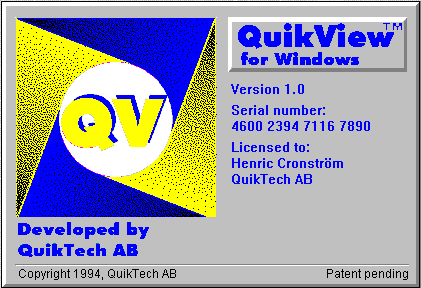Unlock a world of possibilities! Login now and discover the exclusive benefits awaiting you.
- Subscribe to RSS Feed
- Mark as New
- Mark as Read
- Bookmark
- Subscribe
- Printer Friendly Page
- Report Inappropriate Content
Eighteen years ago I had just started a new job at QuikTech (no that’s not a typo) and my boss – one of the two founders – dropped a shrink-wrapped FoxPro database in my lap while saying: “You see, I have this idea about color coding information – green, white and gray. Can you see if you can achieve that with this database?”
At the same time, two other people in the company were given the same task but with other tools – Excel and a multimedia tool called Authorware. Neither of us succeeded very well, so we decided to call a really good developer that two of us knew from university and ask him if he could do something in C++.
A couple of months later we had the first version of QuikView, later renamed QlikView. It had list boxes and nothing else. No tables, no graphs, no aggregations, no numerical calculations. We sold these early versions to companies that needed logical visualization of data.


Many things have changed since, but the core in QlikView is still the same: The logical inference engine; the user selects a field value and QlikView answers by indicating which other values are implied by the selection and which are excluded. QlikView was different from all other tools on the market in that it was not a number-crunching tool – it was a tool for visualizing logical relationships.
QlikView is still today different from all other tools in this regard. In fact, the logical inference engine is what enables the user to explore data freely without predefined search paths, which is the core of Business Discovery.
The first two years with QlikTech, I had many hats. At the same time I was the project manager, the product manager, the R&D manager, the technical writer and the pre-sales consultant. But we did not use these labels then. We did not have clear roles and flexibility was important.
Since then, I have implemented numerous QlikView solutions and been heavily involved in defining new QlikView versions. Today, my responsibilities have moved toward communication about the product.
Hence, the QlikView Design Blog. Here, I and other “QlikTechies” will write about how to build QlikView solutions. We will write about scripting, visual design, extensions, server configuration, do’s and don’ts, etc. It will sometimes be very technical and sometimes not.
Please give us feedback on the content. Send us questions and suggestions. We are here for you. Welcome to the QlikView Design Blog!
Henric Cronström, Technical Product Advocate
- « Previous
-
- 1
- 2
- Next »
You must be a registered user to add a comment. If you've already registered, sign in. Otherwise, register and sign in.